German Ministry of Health - "One in 5,000 people is affected by a serious side effect after a COVID19 vaccine"
Data from the Paul Ehrlich Institute
Your support is very much appreciated. Please consider taking out a paid subscription to support independent journalism.
This morning, the German Ministry of Health tweeted the following:


Translated, this tweet says “ One in 5000 people is affected by a serious side effect after a COVID19 vaccination. If you suspect an adverse reaction, get medical attention and report your symptoms to @PEI_Germany”.
This is quite an admission from the Health Ministry. It doesn’t even use language such as “side effects are reported”, it flat out says one in 5000 are affected.
Furthermore, these are serious side effects they are tweeting about, not just a mild reaction at the injection site. Serious side effects are defined as “side effects that are fatal or life-threatening, require hospitalisation or prolongation of hospitalisation, result in permanent or sever disability, disability, congenital anomalies, or birth defects”.
This data comes from a report produced by the Paul Ehrlich Institute.
The report states that there have been 296,233 reports of suspected side effects up to 31 March 2022. The reporting rate was 1.7 per 1,000 vaccine doses for all vaccines combined and 0.2 serious reaction reports per 1,000 doses. So the one in 5,000 people getting serious side effects is actually one in 5,000 doses.
The reporting rate was generally lower with the Pfizer vaccine compared with the other approved vaccines. The reporting rate was also lower after boosters when compared with primary vaccination.
The reported rate of frequent adverse reactions include myocarditis (1.3 report per 100,000), tachycardia (8.19) and lymphadenopathy (11.52).
Whilst the rate of side effects is relatively low, as we have seen with myocarditis, these can rise dramatically in different age categories. These risks should be compared with an individual’s risk to serious side effects from Covid depending on their age and health.
Approximately 1% of cases resulted in death (2,810), however when compared with the statistical number of expected deaths in the same period, this was not considered a risk signal. 4% of cases had permanent damage, 33% had not recovered and 14% were unknown. Fortunately, 31% had recovered and 17% were improving.
A total of 5,862 suspected adverse reactions were reported in children and adolescents. 186 were in under 5s, of which 124 were between 15 months and 4 years old. 61 suspected reactions related to infants whose mothers were vaccinated whilst breastfeeding. There was one case of a newborn dying on the day of birth which was determined to be due to a placenta detachment with significant hematoma formation.
As stated above, the takeaway from this report should be that whilst relatively rare, adverse reactions to the Covid-19 vaccines do occur but should be compared with the relatively rare risk of serious complications from Covid itself, depending on age and health. Once these statistics have been presented to an individual, it should be up to them to decide whether vaccination is appropriate for them. They alone should decide whether they want to risk an adverse reaction from a vaccine or a serious outcome from Covid. Nobody should be pressured to take one route or the other. And in no circumstance should somebody have their life disrupted or their freedom curtailed as a result of their personal decision.




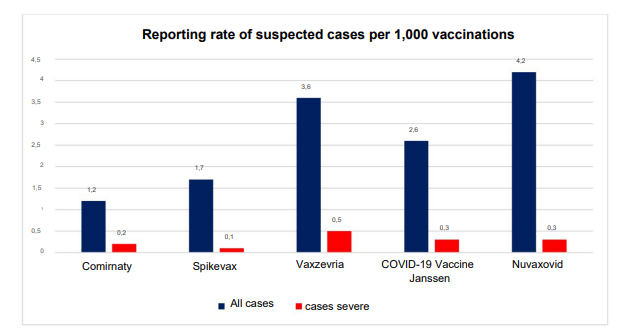
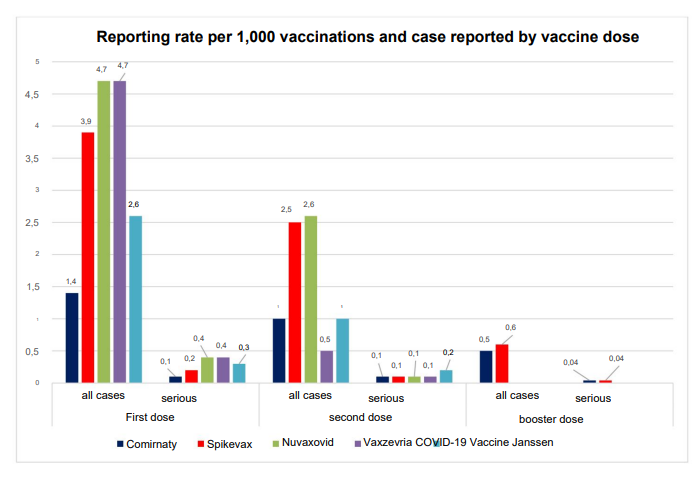
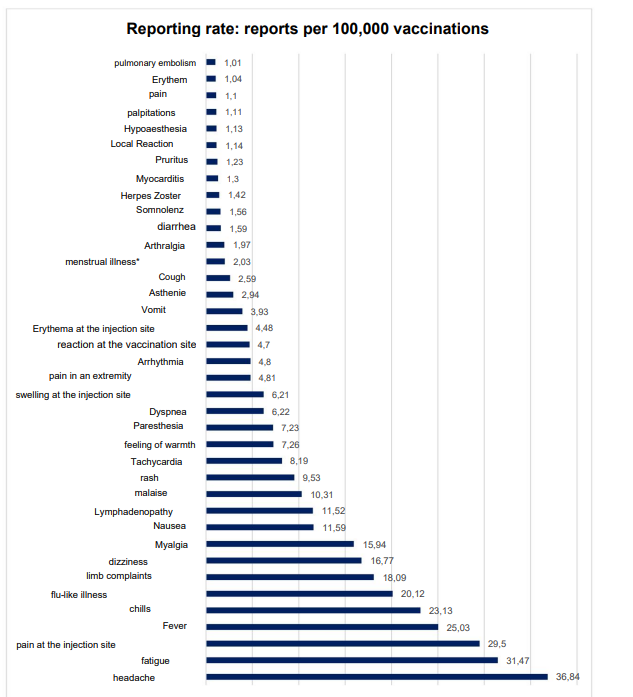
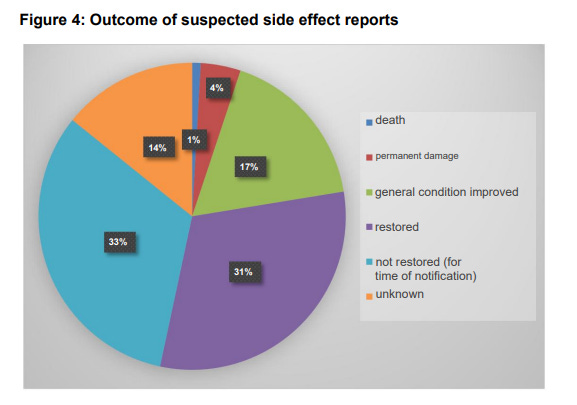
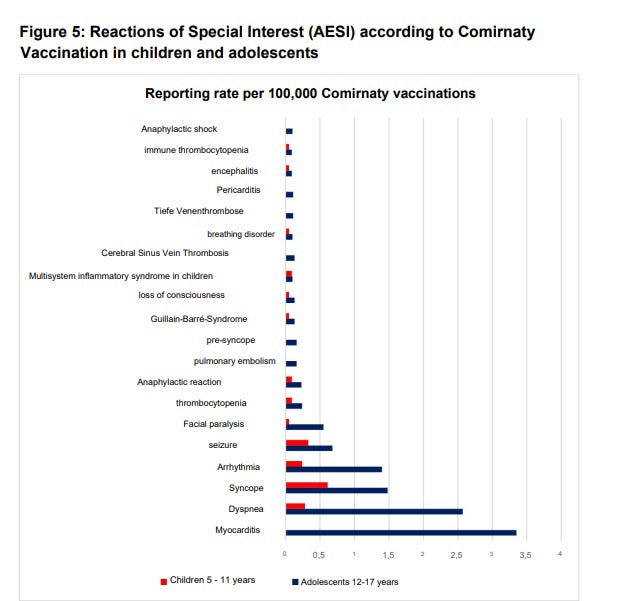
If they admit that number. Imagine the actual one!
Interestingly, none of these charts included COVID-19 as an adverse effect of the vaccine which, as I understand it, is actually the most common side effect, due to negative vaccine efficacy.
Imagine what this ratio would be if "breakthrough" cases and repeated infections were actually tracked as "adverse events"?